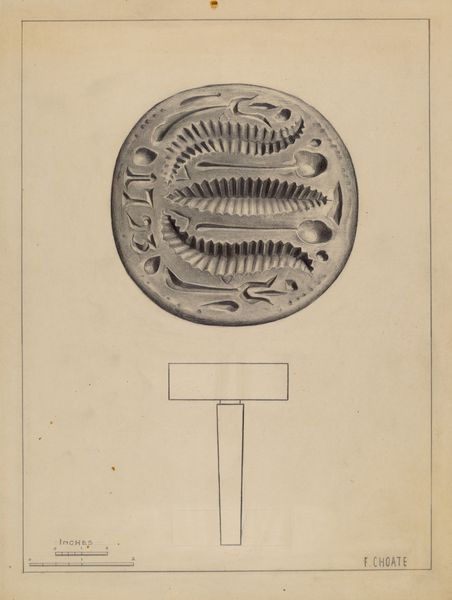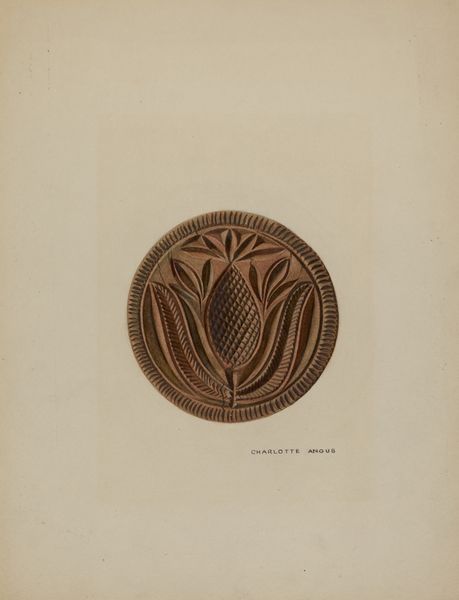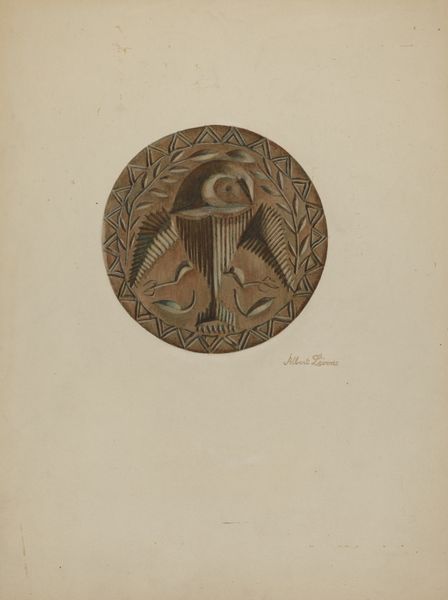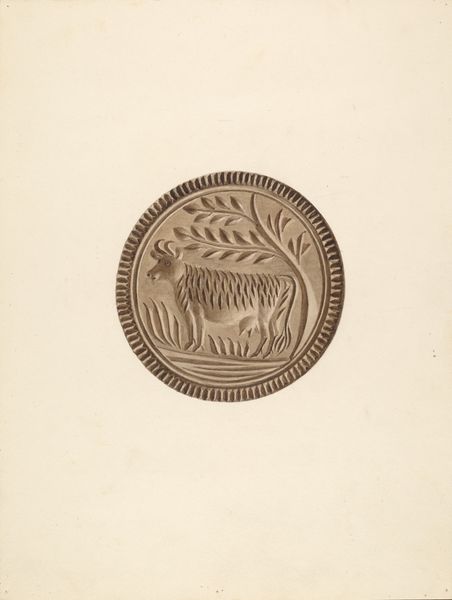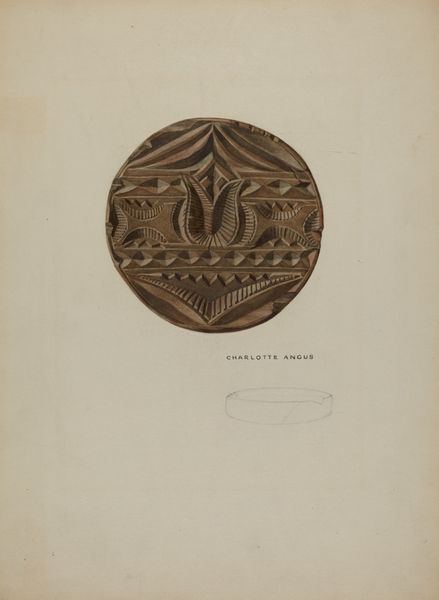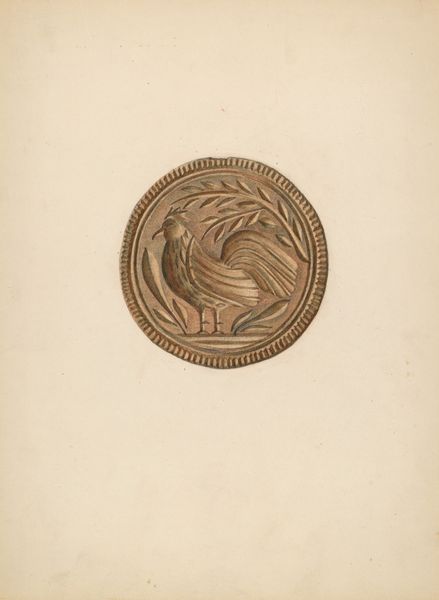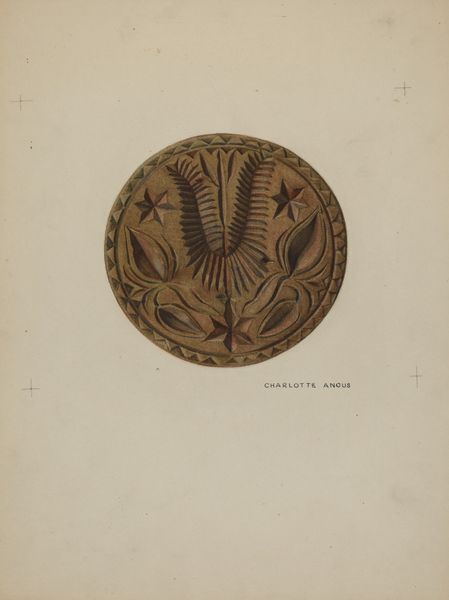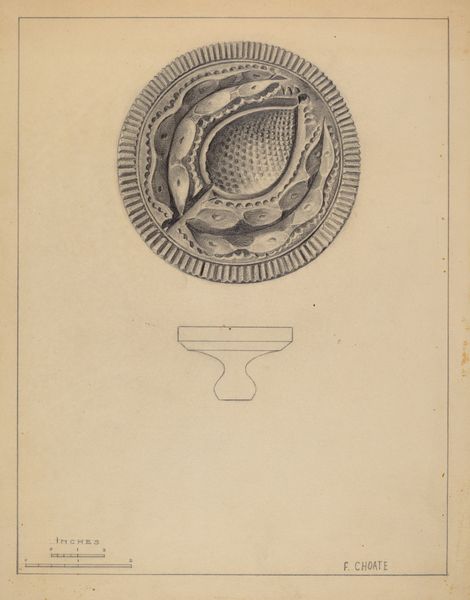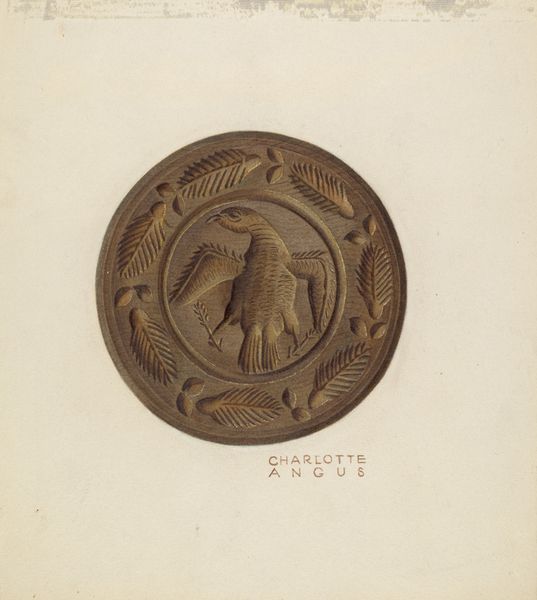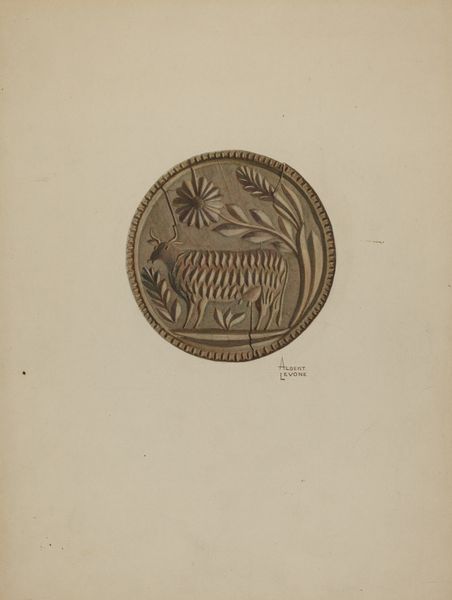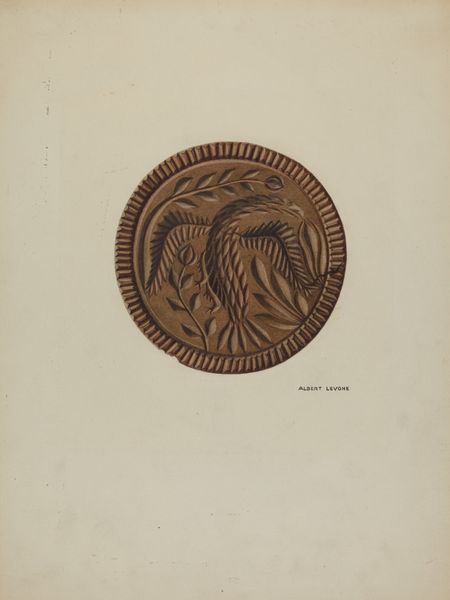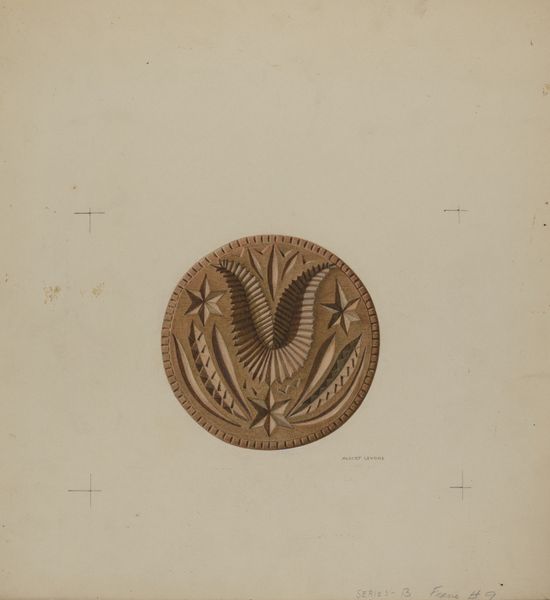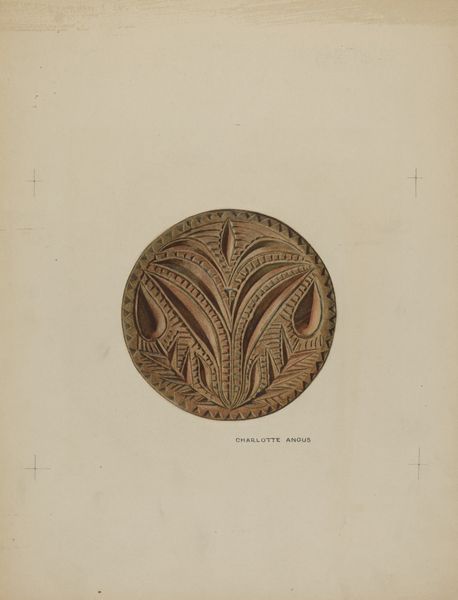
Dimensions: overall: 22.7 x 17.4 cm (8 15/16 x 6 7/8 in.) Original IAD Object: 4 7/8" in diameter
Copyright: National Gallery of Art: CC0 1.0
Curator: Here we have a Pa. German Butter Stamp, estimated to be made sometime between 1935 and 1942 by Charles Von Urban. It’s crafted through wood carving, creating a relief drawing. What are your initial thoughts? Editor: There's something both solemn and whimsical about it. The eagle, that fierce symbol, but rendered with such… almost naive, charming lines. Makes me want to churn some butter and see it imprinted. Curator: The means of production for butter itself and the decorative element it becomes speak volumes about material culture and class distinctions in food production. The work's decorative style emphasizes utilitarian object meant for use but given artistic rendering. We are reminded of social dynamics during butter-making activities, perhaps a family gathering. Editor: Precisely! There's a warmth to that image, a human touch in every detail. It's more than just a functional item, it’s narrative and story made manifest, passed down with food as a material good. Curator: Wood as a medium connects us directly to material constraints and the tools available. Each carving mark signifies choices that intersect functionality and decoration. This synthesis defies any artificial separation between labor and craft in production, revealing a narrative within domestic work. Editor: It almost feels like a family emblem or small mythology rendered in wood. You think of a rural tradition carried in that eagle. It has an almost palpable feel. Curator: Looking closely, the radial patterns and careful symmetry reflect both the artisan’s skill and access to techniques typical for decorative arts from the region. The question lies less in its "high art" value and more in appreciating it as reflecting material knowledge of its period, while also raising critical insights into food production within specific German communities. Editor: Absolutely! In the end, this is where the conversation thrives—within details we see both utility, cultural legacy, artistic expression, as a confluence. It’s beautiful and meaningful because its very form connects human ingenuity, community experience, and time together in family rituals around making foods. Curator: Very insightful, seeing connections as forms that allow social history of the home meet visual form.
Comments
No comments
Be the first to comment and join the conversation on the ultimate creative platform.
